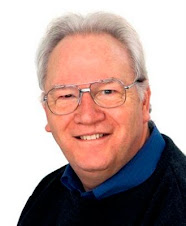There must be little on earth as exciting as being part of a church that has a clear and shared understanding of why it exists and its part in God’s mission for the times in which it is living.
It has been my privilege, during my many years of ministry, to be in such a church on three occasions. The first was in an urban context, where I was part of a shared ministry and leadership team, and the others two occasions were in rural contexts, where I served as an ordained minister. In all three churches I witnessed numerical and spiritual growth, and felt that I was on an exciting journey with God. Sometimes we stumbled on that journey; at other times it felt as if we were running.
At the individual level, most Christians seem to have a sense that God has a particular purpose in calling us to become followers of Jesus Christ and part of his Church. The apostle Paul’s teaching in 1Corinthians about the Body of Christ provides us with an excellent model for understanding what churches are, and what they are for. Each person in the Church has a particular role that serves the whole. Paul describes them as the various members of a body; some apparently more significant than others but actually, all are essential for the wellbeing of the whole.
What I have found exciting is what happens when we start to translate the purpose of God for individuals into what is God’s calling and purpose for a local church or congregation. The individual parts of a body are not intended to be disparate and unrelated to the others but complementary, contributing to the nature and actions of their combined existence. The failure to make that connection between the individual and the local church is one of the most disappointing characteristics of western Christianity today. It is also, potentially, one of the exciting prospects, and not that difficult to discover.
Forty years ago, I set out on a journey to help rural churches become distinctively missional in ways that are particularly appropriate for each individual church within its own unique environment. Along the way, the vision became clearer and the processes to achieve it became better understood. One aspect of its embryonic development took place in the urban context. I was part of a leadership team made up of three key members of an organisation that had been established to carry out rural evangelism in the UK.
A struggling independent church in the town where the organisation was based believed that what was happening through the mission organisation in rural locations could also help them. In responding to this call, the new shared leadership and ministry automatically brought a culture of mission. The church quickly revived and, for many years, played a key part in the life of the town.
Because the mission team was also committed to its work beyond the local church, and was frequently absent from it when engaged in outreach elsewhere, it was necessary for the other members of the church to take on much of the life and work in the town. During this time, I was introduced to some church growth research which suggested that one Christian in ten had the gift of being an evangelist. In order to explore this in our own church I took as the criterion for determining who had such a gift, a person who was always ready and comfortable sharing their testimony and the gospel story with other people. We had more than ten percent.
Having identified the people who were the evangelists among the congregation, the challenge was to help them to develop and find different ways of using their gift. At the same time it raised the question, “So what are the other 90% supposed to do?” Some had already taken on pastoral and other ministries. Sadly, the church never developed this into a structured concept, but the seed of a concept had been sown and was beginning to take shape.
A chance comment during an outreach, a question raised in a mini-conference on rural mission, and an opportunity to undertake a university course on management were to play their parts in developing the embryo into a fully formed and mature process. But more of that another time. There may be enough here to spark your own thinking about how your church might be shaped for mission. What are the gifts and ministries, actual or still potential, discernable in your local church? How might these then shape the missional role of your church within the local community?
Stay safe and stay blessed.
Barry
Rev Barry Osborne
CEO,Rural Mission Solutions
26th September 2020

No comments:
Post a Comment